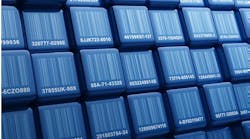What you’ll learn:
- Which anti-counterfeiting technologies are frequently used in the supply chain
- What kinds of results people get when choosing these options
Counterfeit goods cause global problems, with the effects ranging from reputational damage to consumer injuries or deaths. These realities make it more appealing to use supply chain security technology. The associated tools can help people spot fake items faster, preventing them from reaching the market.
Combining Generative AI and Image Recognition
Many people in the industry are exploring how to curb counterfeit products with supply chain security technology. Sometimes such discussions happen at the company level. In other cases, national leaders mandate that specific preventive measures be applied to identify and curb inauthentic products.
In India, the top 300 pharmaceutical companies must apply QR codes to product packaging to aid traceability. That’s a step in the right direction, but it may not go far enough. For example, motivated people can make QR codes stop working by scratching them off with sharp objects or coloring parts in with markers.
However, another possibility is to use generative artificial intelligence (AI) and Google Lens or a similar image recognition tool. That approach enables real-time photo metadata assessments of pharmaceutical packaging. Doing this allows for immediate authenticity verifications. People could also compile the data into a cloud-stored database, making it easier to complete quick but confident product comparisons.
Forward-thinking individuals are exploring various ways to apply generative AI to logistics and supply chain activities. In the pharmaceutical supply chain example, generative AI creates unique, invisible image tags for each product. Then, Google Lens checks the scanned code against a database of known legitimate ones. The wide availability of Google Lens lets everyone from everyday consumers to pharmacy workers engage in anti-counterfeit checks.
This user-friendly method helps minimize counterfeit items’ effects through better visibility. Not spotting a fake product until it’s too late could have disastrous consequences. However, this combination of technologies lets people do real-time verifications at the point of purchase.
Developing Effective Anti-Counterfeit Packaging
People are also interested in how a product’s packaging could prevent counterfeiting. One complicating factor is that counterfeit goods come from many sources. For example, some of the 50 million tons of annual global e-waste is collected and refurbished. While refurbishment is a good thing from an environmental perspective, issues emerge when people misleadingly sell those products as “new.”
In other cases, the manufacturers of genuine items sell unauthorized versions of their products. These items are often the items that failed internal testing and were deemed unfit for sale. Since they look real, people usually need specialized tools to identify such merchandise as counterfeit.
Regardless of a counterfeit item’s source, protective packaging could make it easier for people to tell that a product is not a genuine article. Some advanced packages have high-tech inks virtually impossible to mimic. For example, specific concoctions look different when viewed from various angles.
In other cases, brands use specialized labels with digital tags, watermarks or other tracking mechanisms to safeguard product authenticity. Such approaches are particularly useful for consumable products or high-value items.
When the World Health Organization declared COVID-19 an emergency, one technology provider freely offered a digital security solution for manufacturers to implement and deploy within weeks. The vendor provided it for makers of health care products in exceptionally high demand. The prospect of getting much more than the typical market value for specific items could raise the likelihood of people trying to counterfeit products.
One major benefit was that this option did not require additional infrastructure or manufacturing changes. The system applies a digital, invisible marking to a product’s packaging with a process that applies pseudo-randomly distributed micro-defects to the package’s surface. People can then check the packaging for authenticity with a smartphone app.
Using Additive Manufacturing to Stop Counterfeiting
Product makers, supply chain professionals and others are rapidly experimenting with how additive manufacturing could accelerate prototyping and design processes, allow on-site printing of spare parts and more. A less common—but potentially viable—alternative is to apply additive manufacturing as a supply chain security technology.
Researchers developed a way to conceal magnetic tags bearing authentication details inside hardware made with additive manufacturing. Each tag becomes a permanent and unique identifier, making this marking method potentially superior to alternative tagging methods that could fall off, become unreadable due to wear or tampering or have other shortcomings.
The team designed their approach to work with non-steel metal hardware. They said it does not affect the component’s longevity or performance. After the tag is embedded in the part, people can scan it with a magnetic sensor device, such as a smartphone. Part of this group’s work involved custom-building a three-axis magnetic sensor to map a component’s surface and show which regions a person should scan to check for the anti-counterfeiting measure.
Although this work represents good progress, the researchers wanted to continue developing this innovation to bolster its security. For example, they considered future efforts requiring a person to take a specific action before being allowed to access the magnetic tag. That dual-level protection would make it especially difficult to replicate or compromise.
Designing an Edible QR Code
All supply chain security technology must be both safe and effective. Safety is critical in consumable products. What if both the product and the anti-counterfeit measure were edible? Researchers created such a possibility with a QR code made from silk. They tested it with bottles of upscale whiskey since such products have a high alcohol content. One of their primary questions was whether the edible QR code would withstand such conditions.
Each edible code has identifying characteristics people can reveal with a scan from their smartphone. The researchers say their work could also apply to the health care supply chain, improving the authenticity of alcohol-containing medications.
The group chose fluorescent silk for the QR code, which is not visible to the naked eye and does not affect how the whiskey tastes. Creating these codes requires collecting the silk from the cocoons of a certain type of silkworm. People use that material to make biopolymers and encode patterns into it to make identifying material.
This edible tag was tested for 10 months and performed well when placed inside various types and price points of whiskey. Tests showed people could easily access the authentication content with their smartphones in numerous lighting conditions. Those results suggest real-world applicability. The team also believed this approach would suit the safety seals on pill bottles and packages.
Fascinating Options for Improving Supply Chain Security Technology
These examples show plenty of possibilities for making supply chains more secure with strategically applied technologies. Succeeding in this area will keep consumers safer while protecting manufacturers’ brands and supporting their quality control efforts.









